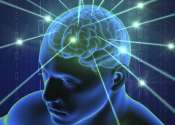Unique visual stimulation may be new treatment for Alzheimer's
Using LED lights flickering at a specific frequency, MIT researchers have shown that they can substantially reduce the beta amyloid plaques seen in Alzheimer's disease, in the visual cortex of mice.
Dec 7, 2016
0
145









